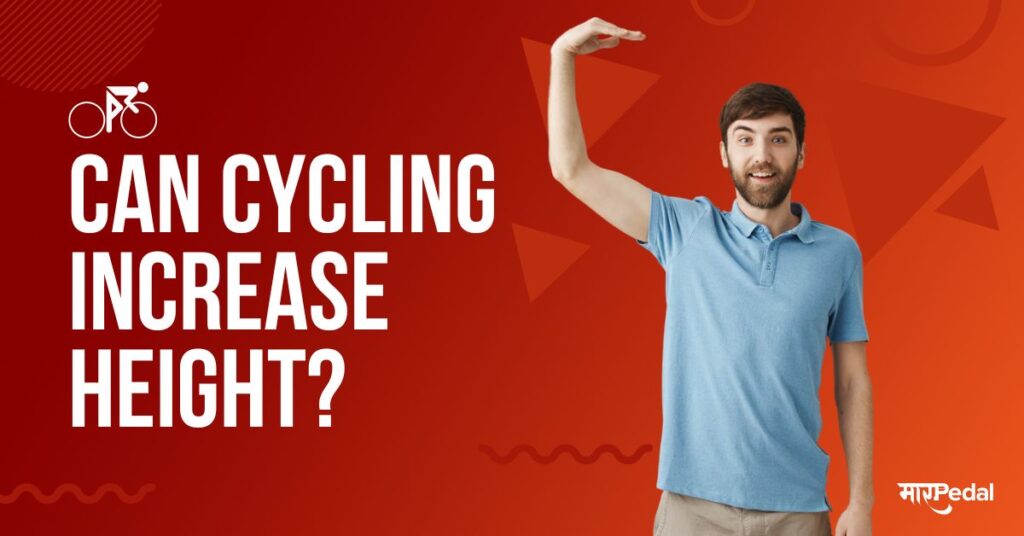
Are you looking for a fun and easy way to get around, but don’t want the hassle of a car or a bicycle?
Look no further than a tricycle! But before you hop on and pedal, you may wonder, “How many wheels does a tricycle have?”
Tricycles, or trikes, are a fun and practical way to get around. They have been around for over a century and are popular today.
In this article, we will explore the definition of a tricycle, the history of tricycles, how many wheels a tricycle has, the benefits of riding a tricycle, different types of tricycles, and much more.
The Definition of a Tricycle
A tricycle is a human-powered vehicle with three wheels. Unlike a bicycle, which has two wheels, a tricycle provides more stability and balance. Tricycles can be pedal-powered, electric-powered, or gas-powered, and come in a variety of styles and sizes.
The History of Tricycles
Tricycles have been around since the 1700s, but it wasn’t until the 1800s that they became popular. The first tricycles were designed for children, but soon adults began to ride them as well.
In the early 1900s, tricycles were used for transportation and were commonly used by mail carriers, milkmen, and other delivery people.
How Many Wheels Does a Tricycle Have?

Photo by Jorvik Tricycles on Unsplash
As mentioned earlier, a tricycle has three wheels. One wheel is in the front, and two wheels are in the back. This configuration provides more stability than a bicycle, which has only two wheels. The front wheel of a tricycle is often larger than the two rear wheels, which helps with steering and balance.
Benefits of riding a tricycle
Tricycles offer many benefits over traditional bicycles. Here are some of the most notable:
Stability
Tricycles are incredibly stable compared to bicycles. The third wheel provides an additional point of contact with the ground, which makes it easier to balance and ride.
Low impact
Tricycles are low-impact vehicles that put less stress on the body than other forms of exercise. This makes them an excellent choice for those with joint pain or mobility issues.
Cargo capacity
Many tricycles come with cargo baskets or trailers, making them an excellent choice for carrying groceries or other items.
Accessibility
Tricycles are accessible to almost everyone, regardless of their age or physical abilities. They’re a great way to get exercise and enjoy the outdoors.
Drawbacks of Riding a Tricycle
While tricycles offer many benefits, there are also some drawbacks to consider:
Limited maneuverability
Tricycles are not as maneuverable as bicycles. They have a larger turning radius, which can make it difficult to navigate tight spaces.
Slower speeds
Tricycles are slower than bicycles due to their larger size and weight. This may not be an issue for those using them for leisurely rides, but it can be a problem for those who need to get somewhere quickly.
Storage
Tricycles take up more storage space than bicycles due to their larger size and three-wheel configuration. This can make them difficult to store in smaller living spaces.
Factors to Consider When Selecting a Tricycle

When selecting a tricycle, it’s essential to consider various factors to ensure that you choose the best one for your needs. Here are the essential factors that you should keep in mind.
Weight Capacity
The weight capacity is one of the most critical factors to consider when selecting a tricycle. Ensure that the tricycle you choose can comfortably support your weight and any additional weight from cargo.
Frame Size
The frame size is another important consideration. The tricycle’s frame should be the right size to ensure that you can comfortably reach the pedals and handlebars.
Wheel Size
Wheel size determines the tricycle’s stability and comfort. Larger wheels offer more stability and a smoother ride, while smaller wheels provide better maneuverability.
Seat Size and Comfort
The tricycle’s seat should be comfortable and provide enough support to prevent discomfort or pain during long rides. Consider selecting a tricycle with an adjustable seat to find the perfect fit.
Handlebars and Grips
Handlebars and grips play a crucial role in ensuring a comfortable ride. Choose a tricycle with ergonomic handlebars and soft grips to prevent hand fatigue and provide better control.
Gearing
The gearing system determines how easy or challenging it is to pedal the tricycle. Consider selecting a tricycle with a gearing system that matches your fitness level and the terrain you’ll be riding on.
Brakes
The braking system should be efficient and easy to use. Ensure that the tricycle you select has brakes that you can comfortably reach and activate.
Suspension
Suspension helps absorb shock and vibrations, making the ride more comfortable. Consider selecting a tricycle with a suspension system if you plan on riding on bumpy or uneven terrain.
Foldability
If you have limited storage space, consider selecting a tricycle that can fold. Folding tricycles are compact and easy to store.
Price
Tricycles come in various price ranges, from budget-friendly options to high-end models. Determine your budget and choose a tricycle that offers the features you need within your price range.
Types of Tricycles for Adults
There are four main types of tricycles for adults: upright tricycles, recumbent tricycles, folding tricycles, and electric tricycles. Each type offers unique features and benefits.
Upright Tricycles
Upright tricycles are the most common type of tricycle. They feature an upright seating position and handlebars, making them comfortable and easy to ride. They are ideal for commuting, running errands, and leisurely rides.
Recumbent Tricycles
Recumbent tricycles feature a reclined seating position, making them an excellent option for individuals with back pain or discomfort. They offer a comfortable and low-impact ride, making them ideal for long rides or touring.
Folding Tricycles
Folding tricycles are compact and easy to store, making them an excellent option for individuals with limited storage space. They are available in both upright and recumbent styles.
Electric Tricycles
Electric tricycles feature an electric motor that provides pedal assistance, making them an excellent option for individuals who need extra assistance. They are available in both upright and recumbent styles.
How to Ride a Tricycle
Riding a tricycle is similar to riding a bicycle, but there are some differences to keep in mind. To ride a tricycle, follow these steps:
- Sit on the seat and adjust it so your feet can touch the pedals comfortably.
- Grip the handlebars and place your feet on the pedals.
- Start pedaling with one foot, and then alternate with the other foot.
- Use the handlebars to steer the tricycle.
- To stop, use the brakes located on the handlebars or pedals.
Remember to wear a helmet and follow the rules of the road when riding a tricycle.
Maintenance and Care for Your Tricycle
To keep your tricycle in good condition, it is important to perform regular maintenance and care. This includes:
- Checking the tires for proper inflation and wear
- Lubricating the chain and other moving parts
- Tightening bolts and screws
- Cleaning the tricycle after each use
- Storing the tricycle in a dry, covered area
By taking care of your tricycle, you can ensure that it will last for many years to come.
Safety Tips for Riding a Tricycle
When riding a tricycle, it is important to follow these safety tips:
- Wear a helmet and other protective gear
- Follow the rules of the road
- Stay visible to drivers by wearing bright colors and using lights or reflectors
- Keep both hands on the handlebars while riding
- Use the brakes to slow down and stop
- Avoid riding in bad weather conditions
- Check your tricycle before each ride for any potential issues
By following these safety tips, you can minimize the risk of accidents while riding a tricycle.
Tricycles for Kids

Tricycles are a great way for kids to get exercise and improve their balance and coordination. There are many tricycles available for children of all ages, from toddler-sized tricycles to those designed for older kids. Some tricycles even come with fun features like bells, baskets, and streamers.
Conclusion
Tricycles are a fun and practical way to get around, whether for recreation, exercise, or commuting. With so many different types and models available, there is sure to be a tricycle that is right for you.
By following the safety tips and properly maintaining your tricycle, you can ensure that you will have many years of enjoyable and safe riding.
FAQ
How Many Wheels Do 4 Tricycles Have?
Four tricycles would have a total of twelve wheels. Each tricycle has three wheels, so when you multiply that by four, you get twelve.
Does a Tricycle Have Four Wheels?
No, a tricycle does not have four wheels. A tricycle has three wheels, which is what sets it apart from a bicycle, which has two wheels.
How Many Wheels Does a Cycle Have?
A cycle, or a bicycle, has two wheels.
What Is the Standard Size Tricycle?
The standard-size tricycle varies depending on the brand and model. However, most adult tricycles have a wheel size of around 24 inches, while children’s tricycles typically have a wheel size of 12 to 16 inches.
What Height Is a 20 Inch Tricycle For?
A 20-inch tricycle is typically suitable for children who are between 3 and 5 years old and have a height of 38 to 48 inches. However, it’s always best to check the manufacturer’s recommendations to ensure the tricycle is the right size for your child.
What Size Three Wheel Bike Do I Need?
The size of the three-wheel bike you need depends on your height and the intended use of the bike. Most adult tricycles have a wheel size of around 24 inches, but there are also smaller and larger models available. It’s important to consider factors such as comfort, stability, and ease of use when selecting a tricycle size.






